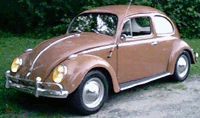
The Bean Trees
CHAPTER 1
"The One To Get Away"
Visitors Since 9/8/99
Last Update
5/2/03

 |
The Bean Trees CHAPTER 1 "The One To Get Away"
Visitors Since 9/8/99
|  |
Some Opening Comments and Ideas to Reflect on about Chapter 1
1. The titles of chapters in the book act as clues or symbols of ideas that are important. Taylor, the narrator or "I" of this chapter, is the one to get away, much like the lunker (the large fish) that always gets away, a fish that she talks about in this chapter. The Hardbines are typical of those who do not get away. Try to identify what are the characteristics of society that Kingsolver wants people to see as bad--something people should run away from. Or, do you think Turtle is "the one to get away?" How does this change your view of the chapter? What if both Taylor and Turtle are "the one"? Can two people be "the one"?
2. Notice all the "thrown away" and "rejected" women and children in this chapter. Which father wants his child aborted? Which father calls his own daughter a slut? Which child is sexually molested and left in bar parking lot? Which child is hit by its own grandfather? Compare and contrast Mama, Jolene, Missy/Taylor, and the Indian woman in the way they cope with fathers, husbands, or children and life in general.
3. Consider also the way groups of people are oppressed because of race, such as the Cherokees, whose land is robbed in the misleadingly named "Jackson Purchase" and who then are starved and walked to death by the government on the Trail of Tears. How does Taylor use her sense of "entitlement" over the past oppression of her Indian ancestors to justify a questionable act? HINT: What are "head rights" and why does Taylor imply such "head rights" justify her "adoption" of Turtle?
4. Think about the symbolism of the narrator's name changes--she has three in one chapter! As the child of the cleaning lady, Taylor is not permitted to talk to the other children of the town as an equal. This leads to her wanting to be "Miss Marietta," and her first name change. Examine each name change. How do the name changes indicate changes in the personality of the narrator? What might be the symbolism of "Taylor"? Is there any connection between the narrator and tails, tales, or tailors?
5. Ethically how do we judge Taylor? Given her state of hunger, her lack of experience with any police, the isolation of the bar, her own youth and ignorance of the law, is she behaving morally when she takes Turtle with her to a motel? What other factors are involved? What crimes could she be accused of? What alternatives did she have? What were the risks to Taylor and to Turtle?
|
Taylor's VW, however, didn't even have windows, so this would be a step up for her! Note: How likely was it legal to drive her car? Do you think she had insurance? Could she risk contacting the police?
A silo
St. Louis Arch
Candy stripers often wear pink seersucker uniforms, hence the name, since the cloth looks like stripes of candy |
Page numbers from the large-sized paperback edition

|
Paper Topics based on Chapter 1
I. One-Paragraph Papers
A. Example Papers
1. Taylor is very independent.
2. Jolene is abused by the men in her life.
3. Taylor's mom is a good mom.
4. Taylor's father is a bad father.
5. A key theme in Chapter 1 is what matters about people are their personalities and other "inner qualities," not outer qualities, like appearance, wealth, or social status. (This may require more than one paragraph to cover well.)
B. Contrast Papers
1. Taylor and Jolene are different in several ways.
2. Taylor and Newt are different in several ways.
C. Argument Papers
1. Taylor should have taken Turtle.
2. Taylor should not have taken Turtle.
3. Taylor's upbringing was superior to Jolene's upbringing.
II. Essay Topics
1. Write a complex comparison/contrast of the parents and children in the chapter. Consider the role of encouragement, violence, education, social opportunities, and social expectations in leading to the "success" or "failure" of particular characters. You will need to define what you mean by "success" in life. Note the key differences in ways characters judge success and how this also contributes to how they judge themselves and their roles in the community.
2. Use the chapter to make an argument about whether or not people are able to overcome or not the social circumstances they are born into and the way they are raised, educated, and treated.
3. Discuss the use of symbols in the chapter and how they introduce and reinforce the themes.







 |
Go to Fall 1999, English 450, 8 a.m. |